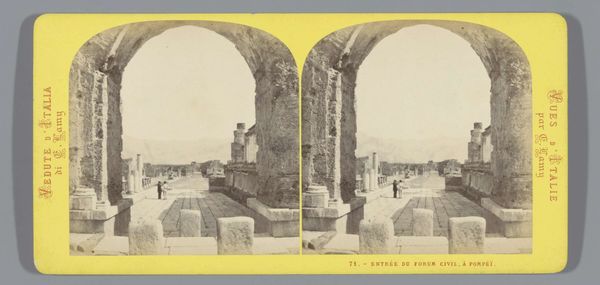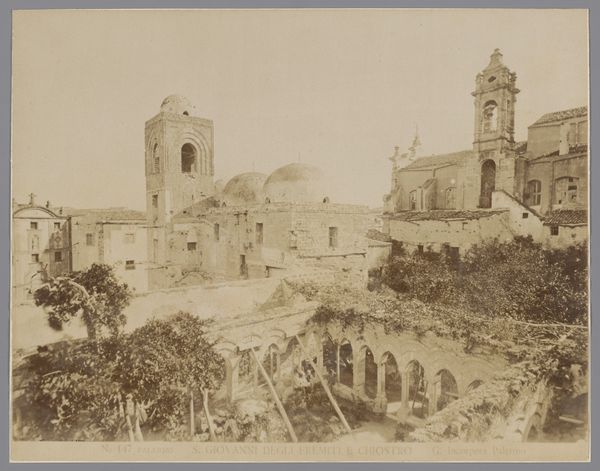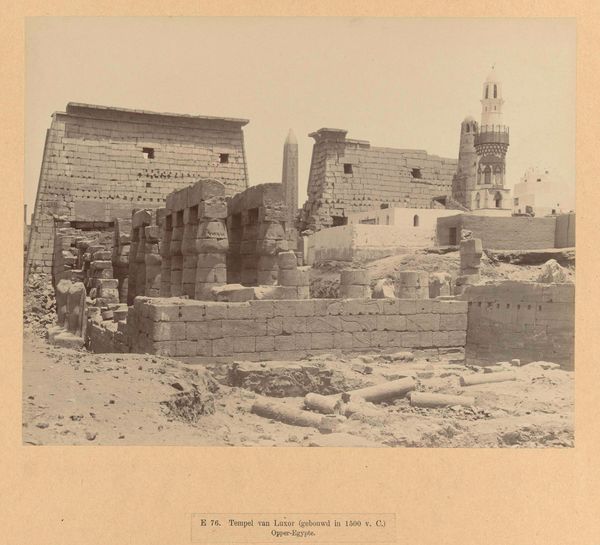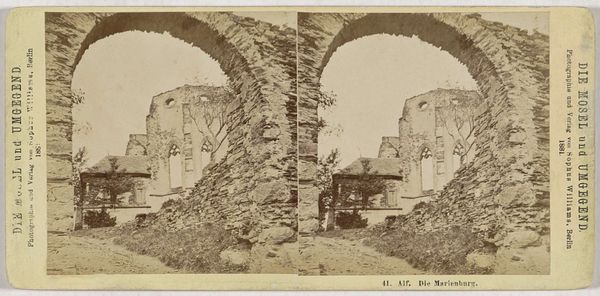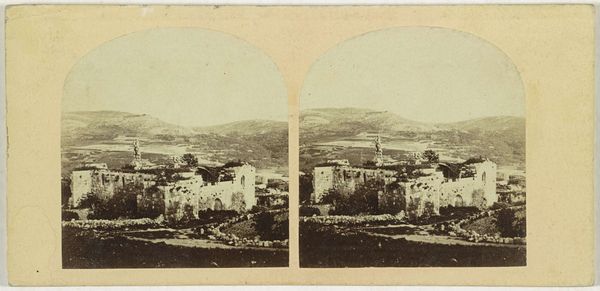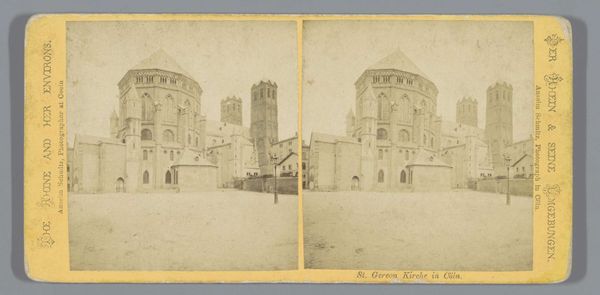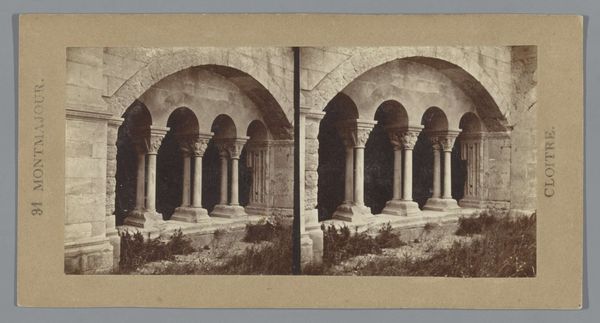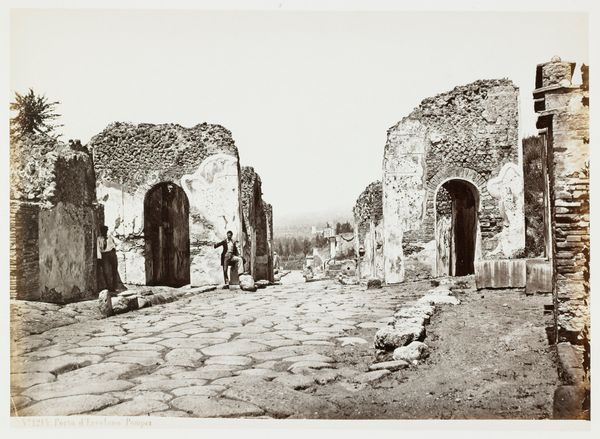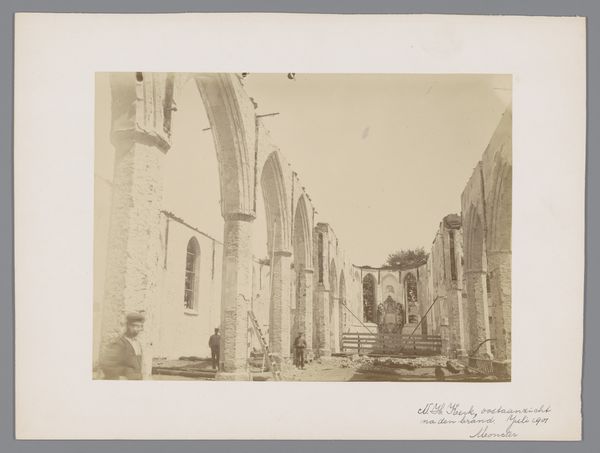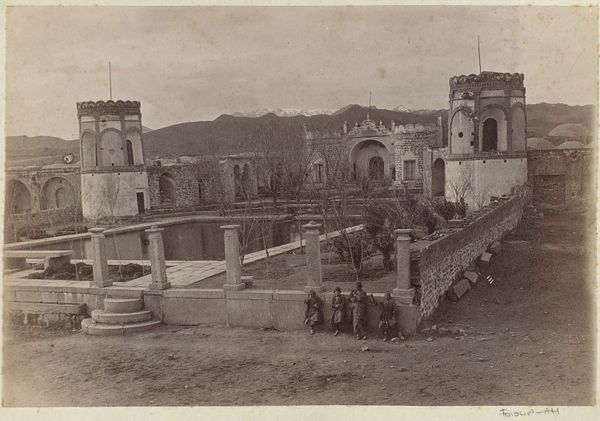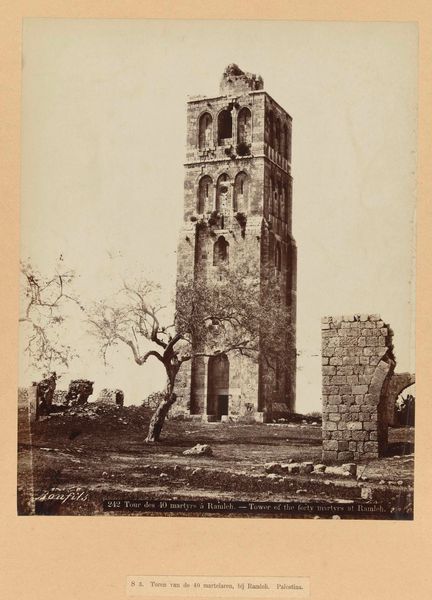![[Church of Saint-Honorat, Arles] by Edouard Baldus](/_next/image?url=https%3A%2F%2Fd2w8kbdekdi1gv.cloudfront.net%2FeyJidWNrZXQiOiAiYXJ0ZXJhLWltYWdlcy1idWNrZXQiLCAia2V5IjogImFydHdvcmtzLzdjMWYwODAwLTU2MmQtNGUxMC05NjA3LTc2MTQzZTVlNTY4Mi83YzFmMDgwMC01NjJkLTRlMTAtOTYwNy03NjE0M2U1ZTU2ODJfZnVsbC5qcGciLCAiZWRpdHMiOiB7InJlc2l6ZSI6IHsid2lkdGgiOiAxOTIwLCAiaGVpZ2h0IjogMTkyMCwgImZpdCI6ICJpbnNpZGUifX19&w=3840&q=75)
architecture
#
toned paper
#
pencil sketch
#
charcoal drawing
#
possibly oil pastel
#
charcoal art
#
coloured pencil
#
arch
#
watercolour bleed
#
watercolour illustration
#
pencil art
#
watercolor
#
architecture
Dimensions: 7.0 x 14.2 cm. (2 3/4 x 5 9/16 in.)
Copyright: Public Domain
Curator: I’m immediately struck by a sense of monumental decay in this stereo photograph. There’s a melancholy beauty, a kind of haunting silence permeating the image. Editor: Indeed. We're looking at Édouard Baldus’s circa 1862-1866 photograph, "[Church of Saint-Honorat, Arles]," currently housed at the Metropolitan Museum of Art. Baldus captured this stereoscopic view, utilizing toned paper, a method which lends this sepia tone, enhancing that feeling of faded grandeur. Curator: The arches—even fragmented—speak volumes. Arches often symbolize aspiration, the link between the earthly and the divine, yet here they stand partially collapsed, the heavens perhaps further away than they once seemed? The human desire to connect with the eternal, now broken... Editor: Baldus was active during a period of significant social and political upheaval in France. Considering this context, might this image speak to a broader sense of societal fragility? The crumbling church perhaps mirrors the shifting foundations of power and belief during the Second Empire. Curator: That’s a compelling perspective! Or perhaps Baldus simply saw inherent beauty in ruins, echoes of earlier faiths and aesthetic styles mingling in the landscape? There’s something deeply romantic in picturing lost orders and broken things—aren’t they the perfect reminder of vanitas themes, especially potent in places of worship? Editor: Yes, that visual drama is potent but there is an elision of people that adds an unsettling layer. The absence almost amplifies the historical weight—the struggles and changes this space has weathered are somehow heavier for not showing those most affected by them. Who worshiped here and what happened to them? It feels vital to remember them as we analyze an aesthetic remnant of their world. Curator: You know, focusing on these particular visual ruins allows me to reimagine these themes of impermanence—a powerful paradox indeed. Editor: Absolutely. It pushes us to reflect not only on what has been lost but how we choose to remember and interpret these histories in the present, to whom did this location even offer solace, freedom, power or even constraint?
Comments
No comments
Be the first to comment and join the conversation on the ultimate creative platform.
